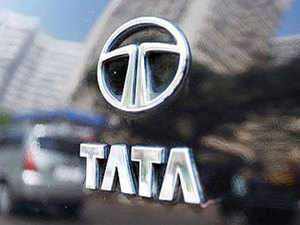CHENNAI: As part of its new product strategy, Tata Motors is planning an entire pipeline of models based on a two brand new architecture that will give the company “12-14 new nameplates” by 2022.
According to senior company officials, the strategy involves restricting future new products to two platforms – the Alfa architecture and the Omega architecture. With all products coming out of these two platforms, the company plans to utilise cost benefits coming out of common parts and economies of scale to continue its passenger vehicle turnaround.
Speaking to TOI, Mayank Pareek, president-passenger vehicles, Tata Motors, said: “The Alfa platform will be for more compact future cars which are four metre or less whereas the Omega platform is for bigger cars including hot hatches, sedans and bigger SUVs.”
Based on Tata Motors stablemate Jaguar-Land Rover’s Discovery Sport architecture, the Omega platform would allow Tata Motors to tap the premium-end of the passenger vehicle market, he said.
“Earlier every car was a new platform; this way the customers will have plenty of product options. But the company will consolidate platforms and contain the complexity,” he said. And all products would have electric capability, he added.
That’s a quantum shift for a company known to be both a strong diesel player as well as a brand preferred by the fleet/taxi segment.
“Yes, our old products were big in the taxi/fleet segment, but we have taken a conscious call to go muted on that and focus more on individual buyers, and 90% of our sales on our new products are from individual customers,” said Pareek.
As for diesel, there too there’s a shift. “We were a big diesel company but in anticipation of a gasoline resurgence, we introduced our new gasoline engine, Revotron in 2014,” he said.
“In Nexon the diesel-petrol ratio is 30:70. Earlier, SUVs were only diesel but now the gap between diesel-petrol coming down sharply and the way economics of diesel and gasoline is panning out, increasingly gasoline is becoming more attractive.”
The first of its two-platform products will debut this fiscal end – the Harrier, an SUV derived from the Discovery Sport-based Omega platform. “And next year, mid-year, we will launch the first product from the Alfa architecture, a hot larger hatch,” added Pareek.
The company began its transformation with the launch of the Tiago in April 2016 followed by Nexon in September 2017.
“We have sold 1.75 lakh units of the Tiago which is the only product in that (entry hatchback) segment which is growing despite being in its third year,” he added.
New models plus the phase out of three of its earlier fast-sellers Indica, Indigo and Nano means Tata Motors has been outperforming the market for the past nine quarters.
“Even in April-August, the market grew 10% but we grew around 37%. While the market has declined in the last two months and 14 out of 17 players showed negative sales growth, we were positive,” he said.
So what’s the near-term objective of this turnaround? “In India, every customer who buys a car, evaluates 2.6 cars, and our target is to be one of those 2.6 brands,” said Pareek.